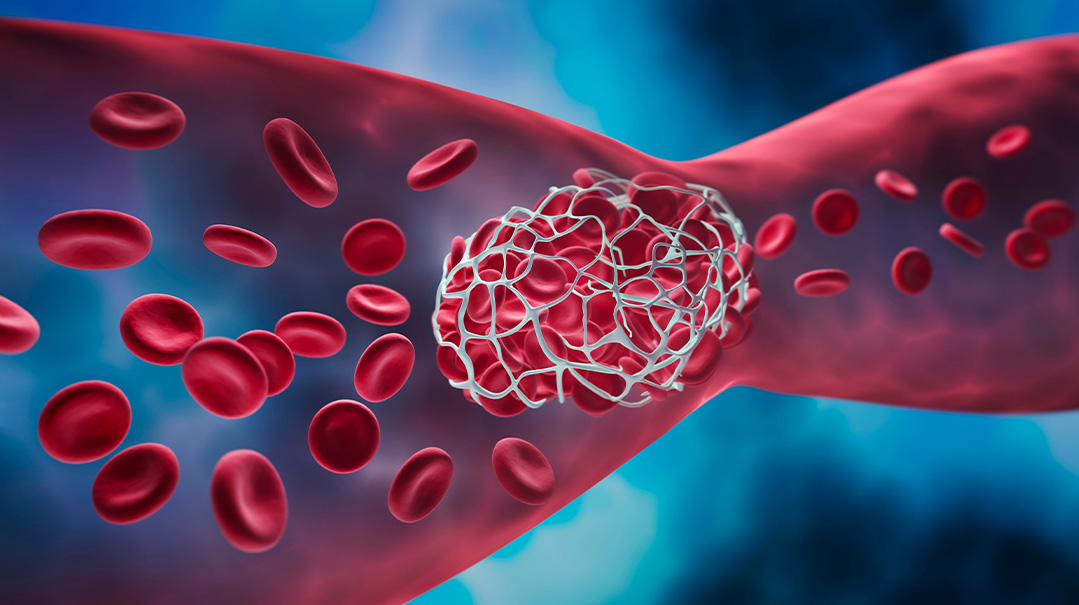The Hidden Menace

“This child is hypotonic with no gag or cough reflexes. She must go back to the PICU!”

As Told to Faigy Peritzman by Elisheva Braun
If you saw my daughter Leah riding her unicycle with her four older brothers, you’d probably be very impressed with her talent. However, you’d be even more impressed if you knew the hashgachah that occurred ten years ago that led to the healthy, strong Leah of today.
It was a Thursday, two weeks before Shavuos, and six-month-old Leah wasn’t a happy camper. She wanted to be held all day and didn’t want to nurse. Thinking she had an ear infection, I took her to the pediatrician. He checked her, assured me there was nothing wrong, it was probably a virus, and sent us home.
That Friday I could hardly prepare anything, Leah was so cranky. Then my husband and I were up the whole night taking turns holding her and trying to get her to eat. We resorted to giving her drops of milk from a medicine dropper just to get some fluid in her, but even that she’d barely swallow.
By Shabbos morning she was very weak. My husband went to shul and met a neighbor who’s a member of Hatzalah. Upon describing her weakness and dehydration, the neighbor called an ambulance, saying, “You don’t take chances on a baby.”
At the hospital, the nurses couldn’t even find a vein to get blood work or hook Leah up to an IV. Although they kept poking her, she was so lethargic and weak she barely cried.
The admissions doctor was perturbed by her inability to swallow and ordered x-rays of her throat. After reviewing the x-rays, a whole group of doctors came to huddle around her crib. Apparently, they were concerned she may have epiglottitis, a potentially fatal condition. If her epiglottis became too swollen or irritated, it could cut off her airways entirely.
They hooked her up to monitors right in front of the nurse’s station to keep an eye on her. Yet, although they were taking all these precautions, it was doubtful she really had this condition, as she didn’t have any of the other symptoms.
After much debate, the doctors decided to do an endoscopy to make a more definitive diagnosis. Such a test would have to be done in the operating room with full anesthesia. It was fraught with risks as well, because if she did indeed have epiglottitis, irritating the condition with a camera would probably stop her breathing and they’d need to intubate her immediately.
It was Shabbos, and we were all alone and so scared. We didn’t know what to do. On one hand, it didn’t sound like this was her condition. On the other, it was clear the doctors didn’t know what else it could be, and shouldn’t we trust the doctors? Reluctantly we agreed to the procedure.
In the middle of the procedure the doctor came out with a smile and said they’d found a gooey white substance in her throat, and removed it. Sure that this was the cause of her inability to swallow, they ruled she didn’t have epiglottis, but thrush.
They moved her to the PICU and decided to treat her with antifungal medications to combat the thrush. The problem was that the medicine was oral, and she couldn’t even swallow her own saliva. They assigned her a private nurse to suction her constantly to keep her from choking.
I still wasn’t comfortable with their diagnosis. A child doesn’t get this sick from thrush. Furthermore, by Motzaei Shabbos, despite the medication, she was getting weaker. She could barely move her head and couldn’t even cry. Yet, every time I mentioned to the doctors that we hadn’t seen any improvement, they brushed me off, saying it takes a baby a long time to get over the effects of full anesthesia.
Oops! We could not locate your form.






